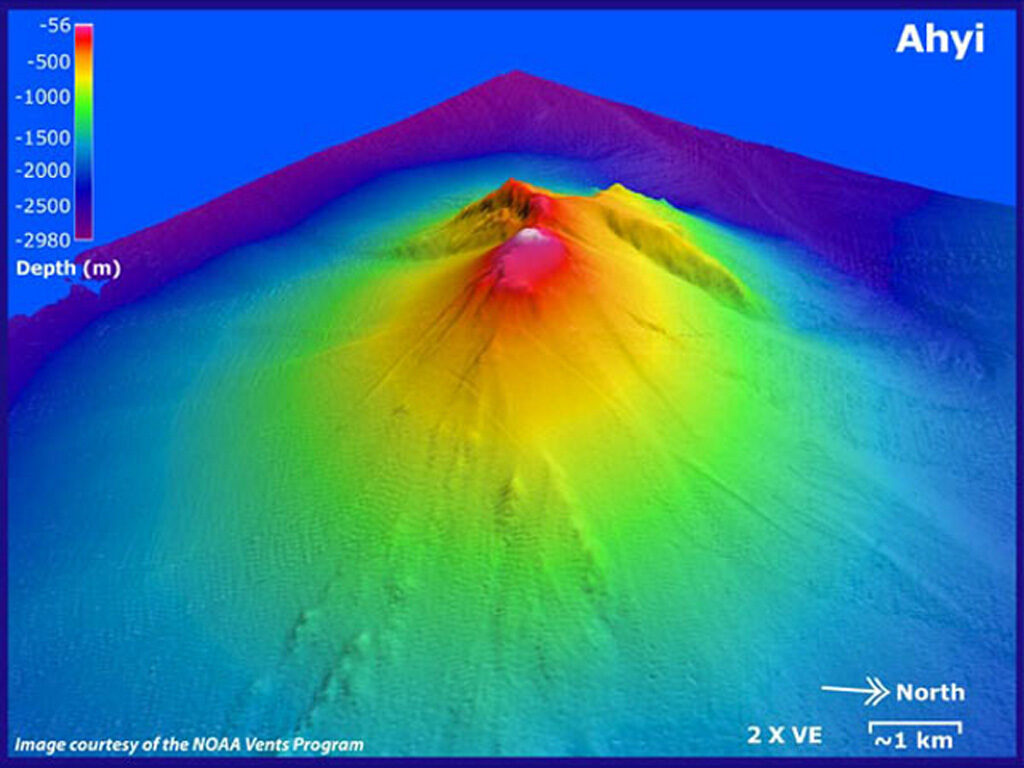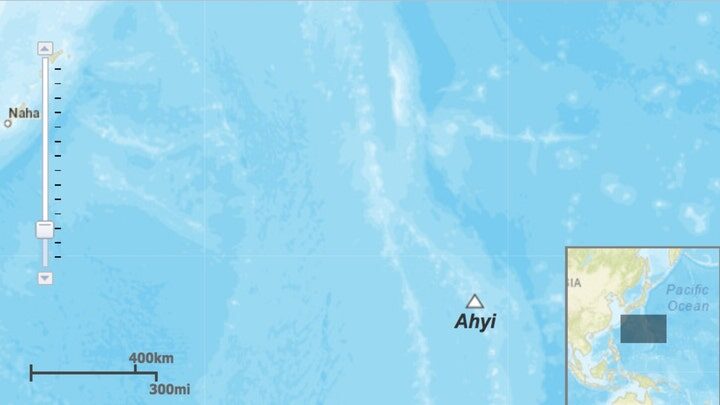For several weeks, scientists of the U.S. Geological Survey (USGS) have been detecting acoustic underwater signals that bear signatures of underwater explosions and were now able to pinpoint their source to the Ahyi seamount, located in the Pacific about 6,100 km (3,800 miles) west of Honolulu.
If the suspicion is true, the volcano's eruption likely started in mid October when the signals appeared. Ships in the area are advised to avoid the area and be cautions in case the eruption or its products including steam, floating pumice rocks, gasses etc reach the surface.
Comment:
Ahyi underwater volcano is located on the northern edge of the Mariana Archipelago and is only one of several active submarine volcanoes forming the Mariana chain of active volcanoes, which is the result of westward subduction of the Pacific oceanic plate underneath the Philippines Sea plate.
The current hydroacoustic signals believed to originate from volcanic activity at Ahyi have been recorded by sensors on Wake Island nearly 2,000 km away. USGS plans to send a team to investigate whether the volcano is indeed erupting or whether the signals might instead be caused by shallow earthquakes near the surface.
So far, satellite imagery doesn't reveal signs of a major eruption that would be visible at the surface, but this doesn't exclude that volcanic activity is taking place, and the situation can of course change quickly and needs to be monitored closely. Large amounts of steam or gas bubbles could rise to the surface and threaten ships as it would dramatically decrease the density of the water and hence the buoyancy of floating objects, which in the worse case can sink into it.
Direct explosions if the eruption reaches the surface, the release of poisonous volcanic gasses (such as carbon dioxide, sulphur dioxide or sulphur hydrogene), ash, mud as well as floating frothy lava pieces (pumice) pose other hazards.
The last measured depth of the crater of the volcano under the sea is only about 75 m only, which is shallow enough for stronger explosions to be able to affect the surface directly.
Ahyi volcano is one of the most active in the Mariana chain. Its last confirmed eruptions occurred in 2001 and 2014.





I've just reviewed my inventory of screenshots of such activities and bouy 52404 ( a Pacific ocean bouy ) is showing anomalous activity as far back as early June. Interestingly such activities do not result in the bouy going into a event mode which would normally suggest a possible tsunami.